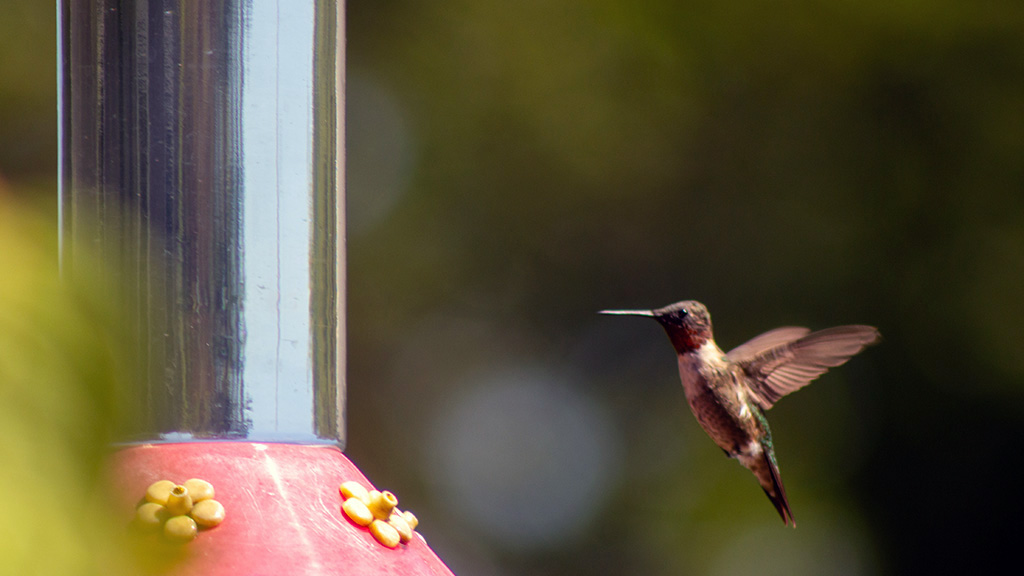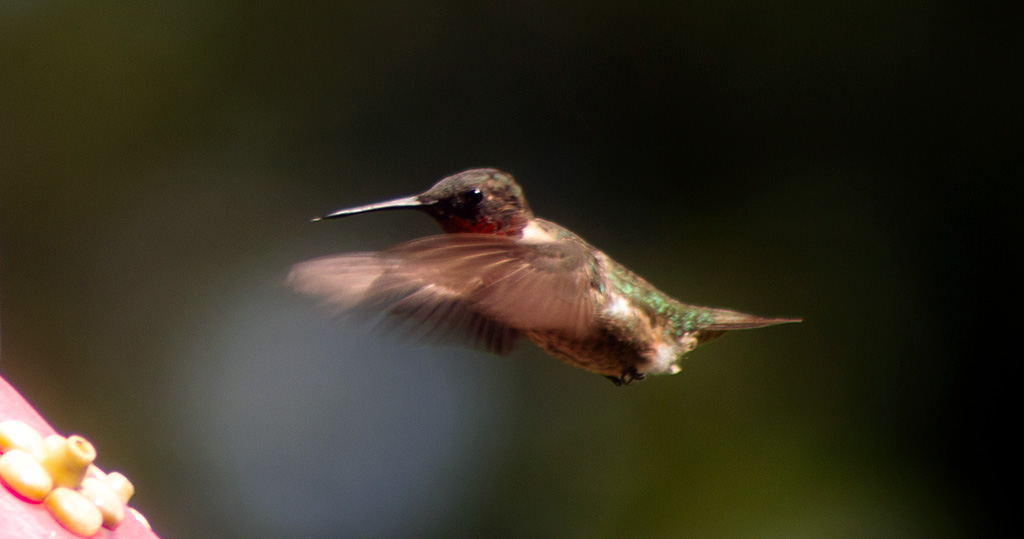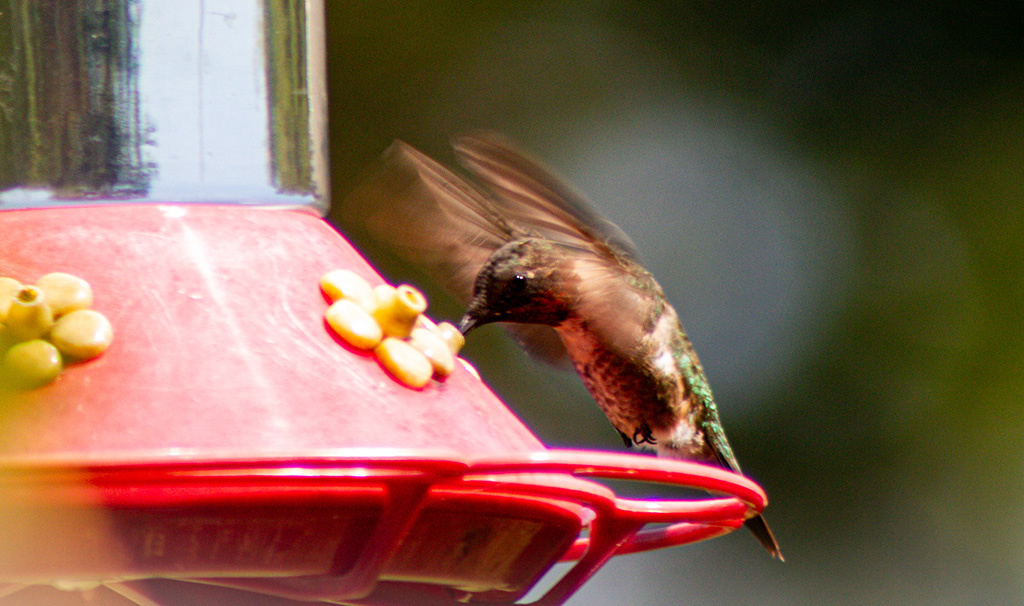In Indiana, most hummingbirds leave between the end of August and the end of September. Either Brad and friends didn’t get the memo, or they just plan to start the migration a little late since the food is good around here.

I’m still feeding Brad and friends.
Experts say in Indiana you should leave your feeders up until mid-November — or two weeks after you last see a hummingbird. That way, you can be sure any stragglers in need of additional energy can fuel up before their long journey south.
The good news is, you don’t have to remove the feeders for hummingbirds to get the hint it’s time to go. They’ll migrate regardless of how great your sugar-water is or how long it’s available for them. By the end of October, they should all be gone.
The Ruby-Throated hummingbird is the only breeding species — and they just ❤️ Indiana.


If I could talk to Brad and friends, I’d tell them this winter is predicted to be colder than normal with more snow.
These little guys and gals aren’t equipped to survive prolonged periods of below-freezing temps or snow. I’d tell them to at LEAST go to Florida if they don’t want to head on down to Panama and fly across the Gulf. That trip to Panama can take months and I wonder if ole’ Brad is a tad lazy.

Considering these amazing creatures should show back up around April, they’d better get a move on!
If you live in Indiana and want to attract more hummingbirds next year, Purdue University has put out an article in PDF format with lots of tips. You can read or download it at this link>>
Now you know: The heart rate of the world’s smallest Hummingbird is a staggering 1,200 beats per minute.
